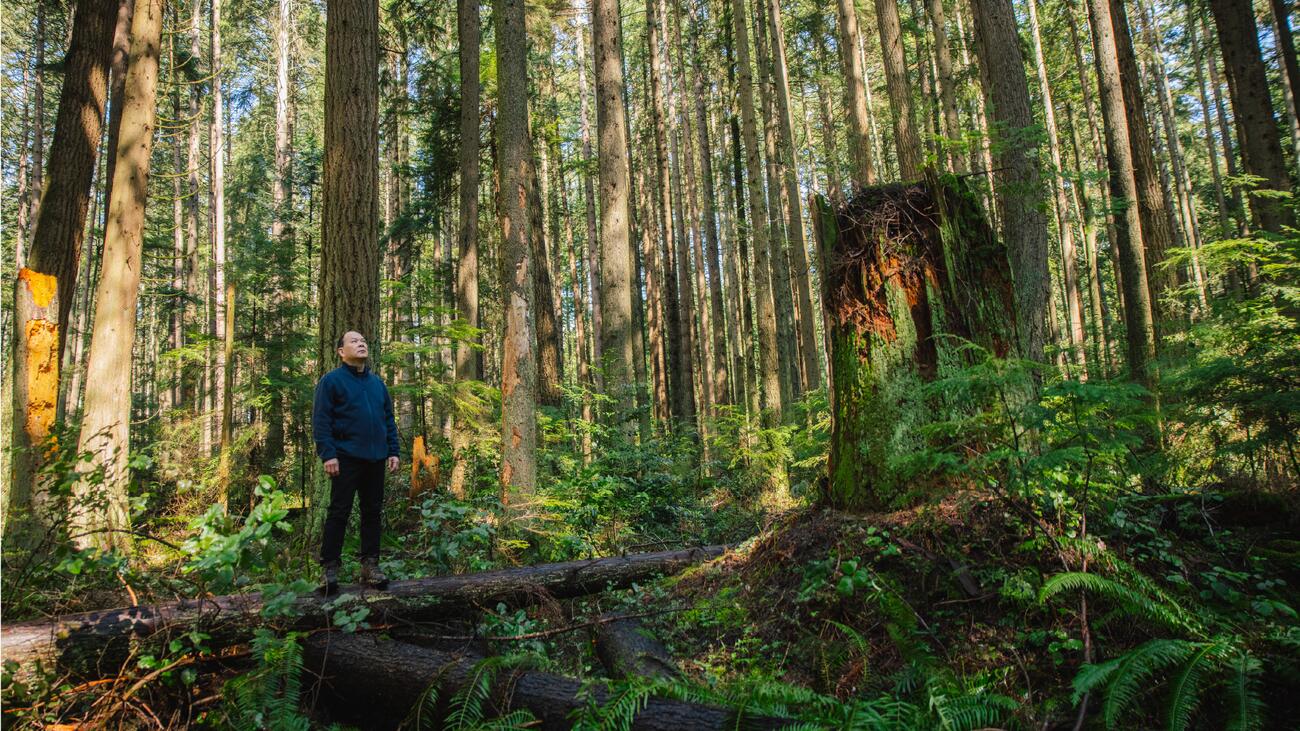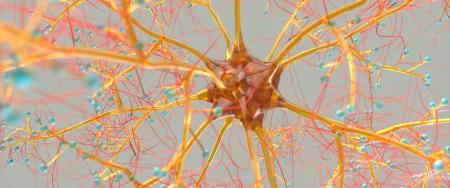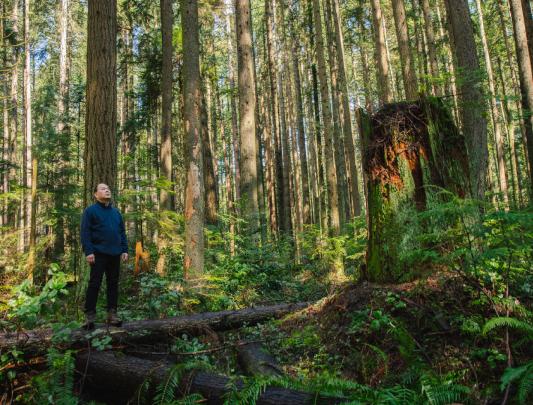
Photography by Kai Jacobson
The science of forest therapy
Connecting with nature, particularly in forests, can benefit our mental and physical health. Professor of forestry Guangyu Wang (PhD’09) is a member of the Multidisciplinary Institute of Natural Therapy (MINT) at UBC. We asked him about its aims to promote forest therapy and bridge the scientific gap between its practice and the physiological and psychological impacts on human beings.
What is forest therapy and when did it first emerge?
Shinrin-yoku (forest bathing) is a Japanese term that emerged in 1982. It describes a way of connecting with nature by immersing yourself in a forest and engaging all of your senses. Forest therapy focuses on activities that relieve stress and help with related medical conditions. Participants are encouraged to be aware of their environment – to hear the birdsong, take deep breaths, touch the soil and the trees, and emotionally connect to “Mother Nature.” It’s quite a mindful practice.
Various studies have indicated that forest therapy can have considerable health benefits. For example, it can lower blood pressure and reduce the risk of cardiovascular disease, and it has been shown to increase the activity of the human body’s natural “killer” cells, which are responsible for fighting viruses and cancer cells.
People who are generally healthy – for example, students experiencing stress – can go to the forest for 15 minutes, follow a forest therapy procedure, and experience some relief. For medical benefits, it’s best to be guided through certain procedures. For anxiety and depression, guides may teach meditation. For immune system disorders, they may guide participants through exercises such as forest yoga to build their strength.
Unlike Japan, where there are over 200 forest therapy facilities for people to use, Canada has hardly any. MINT is looking into how we can create more.
What evidence is there that forest therapy can improve emotional and cognitive health?
When an individual is under stress, the hormone cortisol is released into their body. Recent studies have discovered that forest therapy walks can significantly reduce cortisol levels, indicating a decrease in stress levels. Furthermore, these walks can enhance activity in the prefrontal cortex, an area of the brain linked to decision-making and cognitive function, and also in the parasympathetic nervous system, which is responsible for relaxation and rest. Psychological evaluations have demonstrated that forest therapy can decrease tension and depression and increase feelings of well-being and vigour.
What is the significance of a forest setting?
Forests have complex ecosystems and there are natural chemicals present in trees and plants that can have physiological and psychological effects on humans.
These include phytoncides – volatile organic compounds released by trees and other plants to protect themselves from insects and other pathogens. When inhaled, they can have a calming effect, improve mood, and boost the immune system.
Terpenes are another class of organic compounds found in plants. They have a range of health benefits, with anti-inflammatory, analgesic, and antibacterial properties. Some terpenes are used in aromatherapy for their relaxing and uplifting effects.
Another example is negative oxygen ions, which are molecules containing an extra electron. These have been studied for potential health benefits, such as reducing stress and enhancing overall well-being. Some studies suggest they can help increase the flow of oxygen to the brain, which can improve cognitive function and reduce fatigue.
What aspects of forest therapy is MINT exploring?
Forest therapy is quite new and there are a lot of unknowns. MINT is working with medical professionals and facilities, such as the BC Cancer Agency and UBC Medicine, to understand the complex mechanisms behind the relationship between forests, forest therapy, and human health. A lot of forest therapy focuses on the cultural and the spiritual, but as a scientist I think we need to find evidence.
We are currently researching the effects of guided forest therapy on a diverse range of participants. At the same time, we are mimicking natural environments indoors to test the impact of various factors and their combinations.
In Pacific Spirit Park, we have red cedar, hemlock, and Douglas fir. We capture the forest air and do tests to see what kinds of chemicals are being released from those trees. Then, we create essential oils to mimic them, and test these on participants to observe their different effects on heart rate, blood pressure, and brainwave activity to discover the best combination.
We also create forest landscapes and sounds in virtual reality and compare their effects with real forests. Our ultimate goal is to understand the reactions between forests and humans and introduce forest elements into indoor environments. VR has positive effects, but it’s not as good as the real thing.
How does the practice of forest therapy differ around the world?
There are environmental, cultural, and regulatory differences.
As part of the Forest Therapy Alliance formed last year, MINT is collaborating with forest therapy groups in different areas of world, including South Korea (a temperate area similar to British Columbia), China (tropical and sub-tropical areas), and Arizona (an area more like a savannah, with trees and grasses). We hope to share and compare the results of our studies into these different forest environments at a conference in Sweden next year.
Forest therapy is also quite related to culture, and different cultures have different mindsets, which influences the practice. I have a master’s student studying the comparisons to see how they affect the standards that are developed in different countries.
Forest therapy has become a significant industry in the Asia-Pacific region, with many organizations being primarily motivated by financial gain. However, our alliance takes a different approach, prioritizing the regulation of this industry. To achieve this, we aim to establish a third-party entity consisting of representatives from industry, academia, government, and the general public. This entity will collaborate to develop internationally recognized standards (criteria and indicators) that ensure ethical and sustainable practices within the forest therapy industry.
MINT offers guided forest therapy experiences. Register for future sessions here.



































